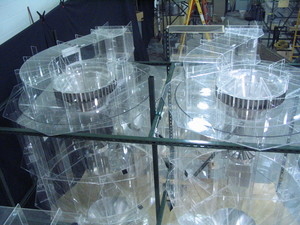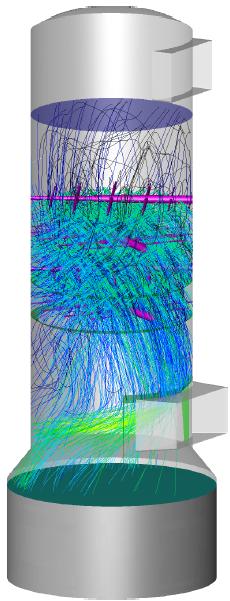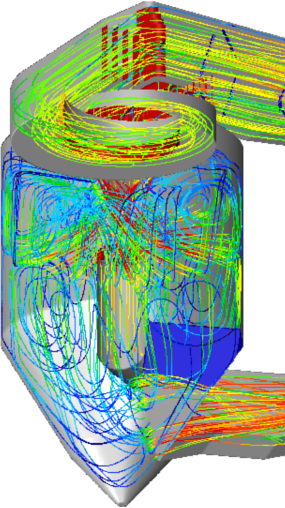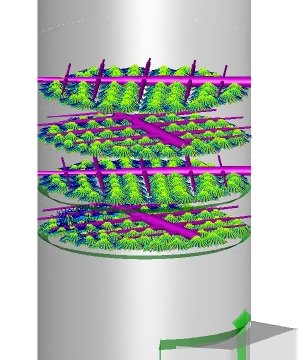Scrubbers
Wet scrubbers (flue gas desulfurization, also known as FGD) and dry scrubbers (spray dry absorption, also known as SDA and sometimes called semi-wet) are very complicated from a flow modeling standpoint, and it can sometimes be difficult to sort out just what model is right for your application.

Besides the typical decision between a physical scale model or a CFD model, there are a host of decisions to be made with either one.
Three basic scopes exist for flow models of wet or semi-wet scrubbers: 
- Inlet duct model only. This type of model can be used to ensure that the gas flow into the unit is not stratified. Particularly in the case of wet scrubbers, this type of model can also be used to ensure that gas flow near the floor is sufficient to prevent slurry back-up into the inlet duct, since this can cause corrosion of the ductwork.
- Model of gas-only flow through the scrubber. Using this type of model, the resistance added by the spray is sometimes added as a perforated plate or a distributed resistance. This can often be used to ensure reasonable bulk behavior, such as overall flow uniformity, but cannot be used to predict mixing between the untreated gas and other injected gases or evaporating liquids.
- Model including spray injection and evaporation. For most scrubbers, quench liquid injection will have significant effects on the flow field. The bulk effect can be simulated using a distributed resistance, but the detailed local effects of the injection and subsequent gas cooling are often of interest. Evaporation of these particles can be included if a CFD model is employed. Since the actual quench liquid injection is modeled, all effects including temperature change, gas momentum, and turbulence levels are naturally included.


Detailed models of parts of a scrubber, such as a mist eliminator or liquid coverage of spray headers, can also help to deal with specific challenges.
